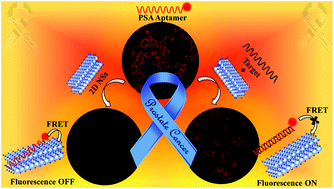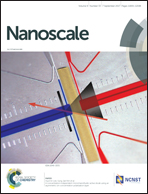Ultra-sensitive DNA sensing of a prostate-specific antigen based on 2D nanosheets in live cells†
Abstract
Herein, we report ultra-sensitive sensing of a prostate-specific antigen (PSA), which is used as a biomarker to detect prostate cancer, using a molybdenum series (MoO3, MoS2, and MoSe2) of two-dimensional nanosheets (2D NSs). Moreover, the design of a 2D NS-based PSA aptamer sensor system was demonstrated based on a fluorescence turn-on mechanism in the presence of a target. The 2D NSs acted as an excellent sensing platform in which the PSA aptamer was adsorbed on the NSs and subsequent energy transfer between them led to fluorescence quenching of the aptamer. The detection limit of PSA was achieved to be 13 pM for MoO3 NSs, whereas the MoS2 and MoSe2 systems exhibited a detection limit of 72 and 157 pM, respectively. To the best of our knowledge, this is the first report on the ultra-sensitive detection of a 2D NS-based aptamer sensor. The in vitro bioimaging measurements were performed using confocal fluorescence microscopy. Herein, PSA detection was successfully demonstrated in human embryonic kidney 293T (HEK) live cells. Moreover, the MoO3, MoS2, and MoSe2 NSs exhibit excellent biocompatibility and low toxicity; thus, these 2D NSs can be used as a promising sensor platform to detect prostate cancer.



 Please wait while we load your content...
Please wait while we load your content...